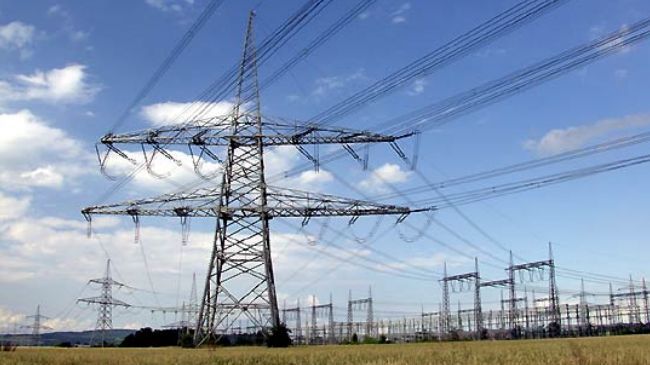By Sayed Niyam Alami-Recently Pajhwok Afghan News (PAN) has published a report on cutting off power supply to our northern provinces by Turkmenistan. Our northern neighbor demanded double price for the imported electricity and the Afghan side denied paying more than the already agreed upon prices. Cutting power supply in the harsh winter of northern provinces was not less than a punishment of the consumers and crisis for the country.
The irony is that despite having abundant amount of natural resources with potential to generate electricity, Afghanistan is still craving for imported electricity. On the other hand, the neighboring states exploit the energy starvation of the war-torn country. In such a time, the government must take concrete measures to rescue its people from external energy dependency.
Unluckily, our neighbors create hurdles for Afghanistan in every facet of development. The Iranian President Rouhani in July, 2017 expressed his intent of jeopardizing and preventing the construction of water dams on our own rivers. The eastern neighbor (Pakistan) is also hampering Afghanistan’s efforts to build power dams as Afghanistan shares nine rivers with the country. So it is imperative for the Afghan government to find a solution and relieve the people from the power shortage crisis at hand?
As electricity happens to be the most wanted necessity of life in modern days, Afghanistan still imports the utility despite being able to harness its natural resources for generating power. Only a meager amount of energy is produced within the country. According to Da Afghanistan BreshnaShirkat (DABS), 280MW to 320MW of power is currently produced in Afghanistan and 1,000MW electricity is imported from Iran, Turkmenistan, Uzbekistan and Tajikistan.
In addition, the Ministry of Water and Energy (MoWE) says Afghanistan requires 2,000MW of power in order to cope with the nation’s energy needs. This is while the ministry claims the country has the potential to produce 318,000MW of power.
Currently, 20 out of 34 provinces in Afghanistan are not connected to the power grid supply which increases cost of doing business, leads to environmental pollution, and subdues sustainable development indicators. This is while demand for energy in Afghanistan is increasing by almost twice its economic growth rate.
On one hand, calls for power are growing rapidly across energy-starved Afghanistan for its economic development, and on the other income opportunities depend on sufficient energy supplies. Therefore, the implementation of short-term, medium-term and most importantly long-term power generation projects is badly needed to address the issue.
Afghanistan’s potential
Using its hydel, solar, gas, wind and coal resources, Afghanistan can become self-reliant in electricity production and irrigation. The country can even export power if its resources are properly managed. Tapping both the renewable energy and non-renewable energy sources can help Afghanistan stand on its own feet.
The country has a lot of renewable energy resources with water being at the top because Afghanistan has significant hydro resources with the river catchment area of 677,900 square meters, annual average rainfall of 300 mm and wide spread hilly topography. Abundant water, a precious commodity, is fortunate reality for Afghanistan if utilized.
Generating Hydropower is the best currently available option. Our rivers such as Kabul, Helmand, Amu, Panj River, Farah, Murghab River and many others are feasible for constructing hyrdropwer dams upon. The geographical location of Afghanistan is extremely mountainous which makes the construction of Hydropower dams a favorable choice; however, unfortunately not much hydro-power projects have been implemented yet, thanks to the decades-long war combined with government’s negligence.
Sunshine is also sufficiently available for producing power as annual average solar insolation is over 300 days of sunshine per year in the country. Wind is another power source with western Herat province known for its seasonal speedy blowing winds. Besides wind and sun, potential alternative energy sources for Afghanistan include biogas and geothermal energy.
Afghanistan is also enriched with non-renewable resources such as coal, oil, natural gas, and uranium. The country is reported to have coal reserves totaling 100-400 million metric tons. These mines are located from Badakhshan and extend up to Herat province. The natural gas and oil deposits situated in northwest of the country including Jawzan and Sar-i-Pul could also be utilized for the best. In addition, the Helmand province in southern Afghanistan has sufficient uranium reserves, confirmed by the Ministry of Mines and Petroleum.
The way forward
Increased access to efficient and sustainable energy sources can help Afghanistan meet its economic growth aspirations. The power generation capacity is far below the needed level. By increasing the generation capacity with efficient use of the natural resources already copiously available in Afghanistan, alternative energy sources could be directed into industrial development.
It is not questionable that the availability of electricity for the population directly contributes to an increase in a country’s Gross Domestic Product (GDP). It will result in new job opportunities and will consequently enhance economic activities.
Afghanistan by managing its water and producing electricity can get rid of dependency on other countries; hence water management for energy must be one of the government’s high priorities. Therefore, I strongly recommend to National Unity Government (NUG) leadership to prioritize this sector so that — if not us — at least the future generations of the country benefit from the utility.
 Afghanistan Times
Afghanistan Times




